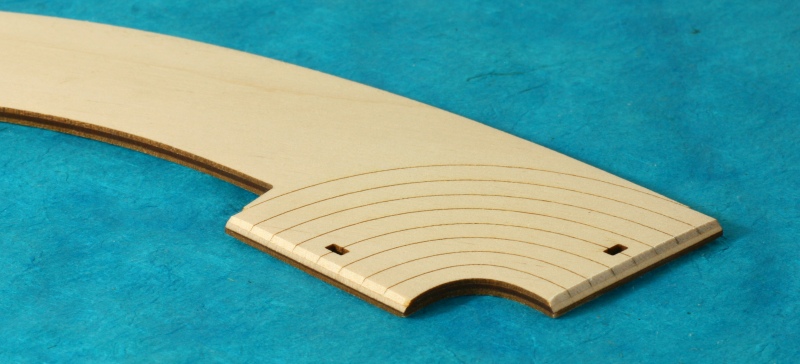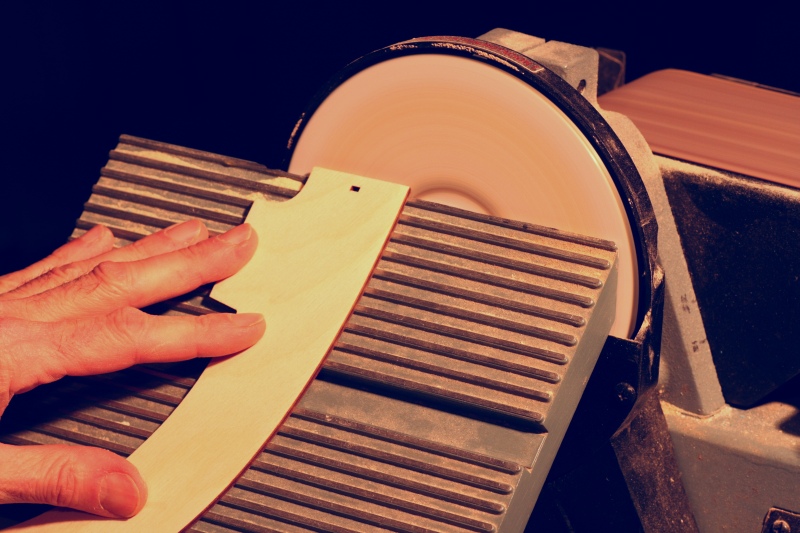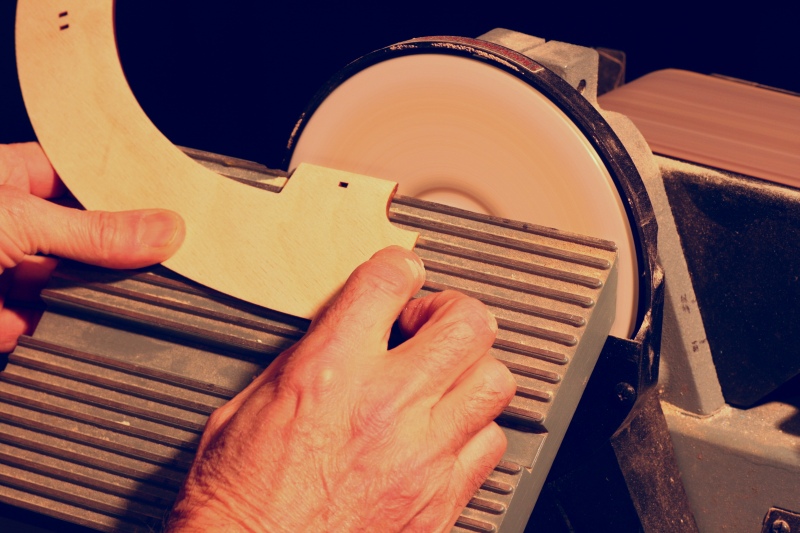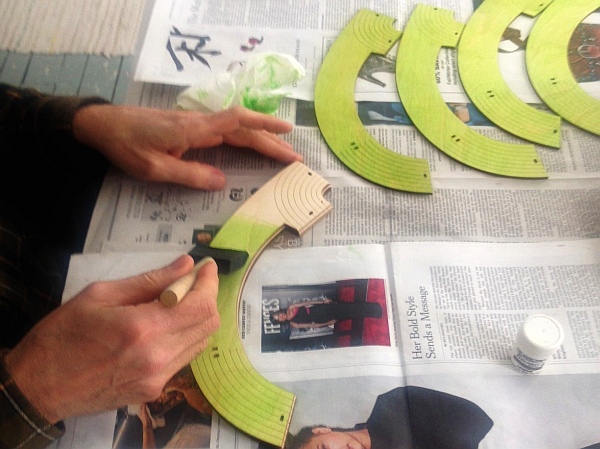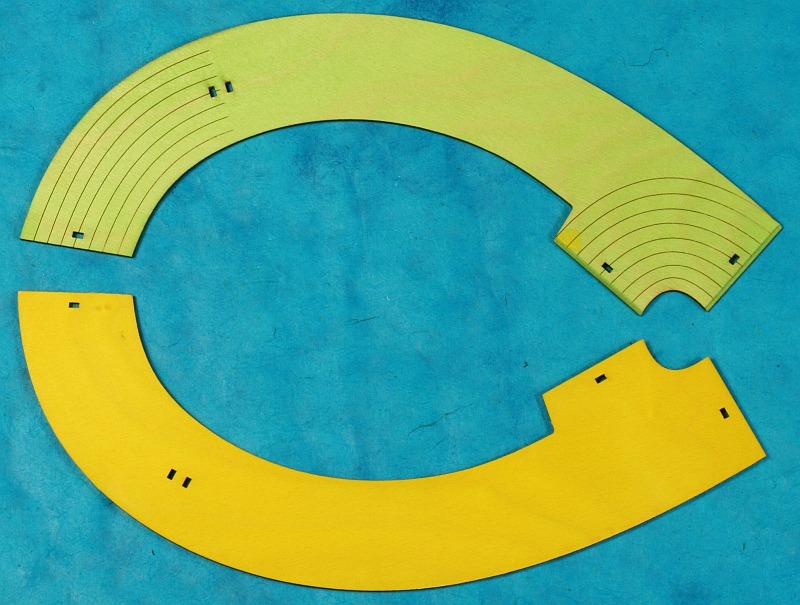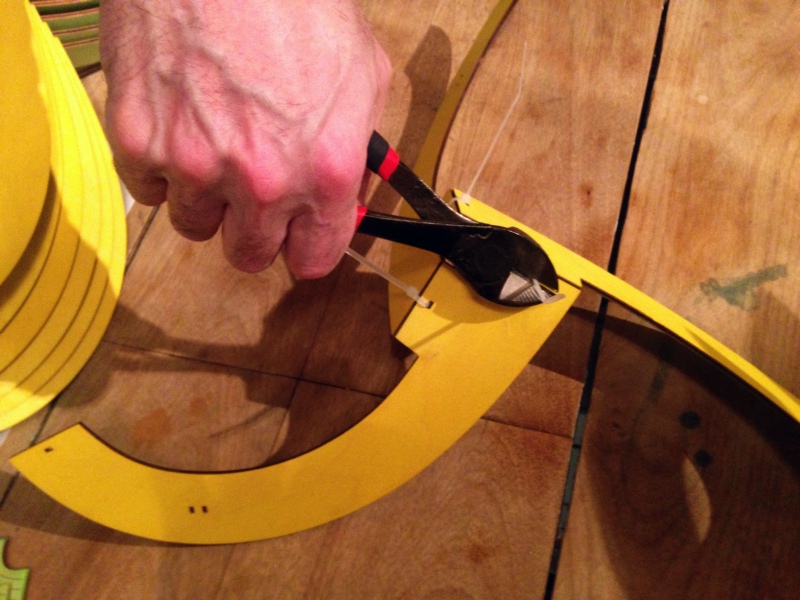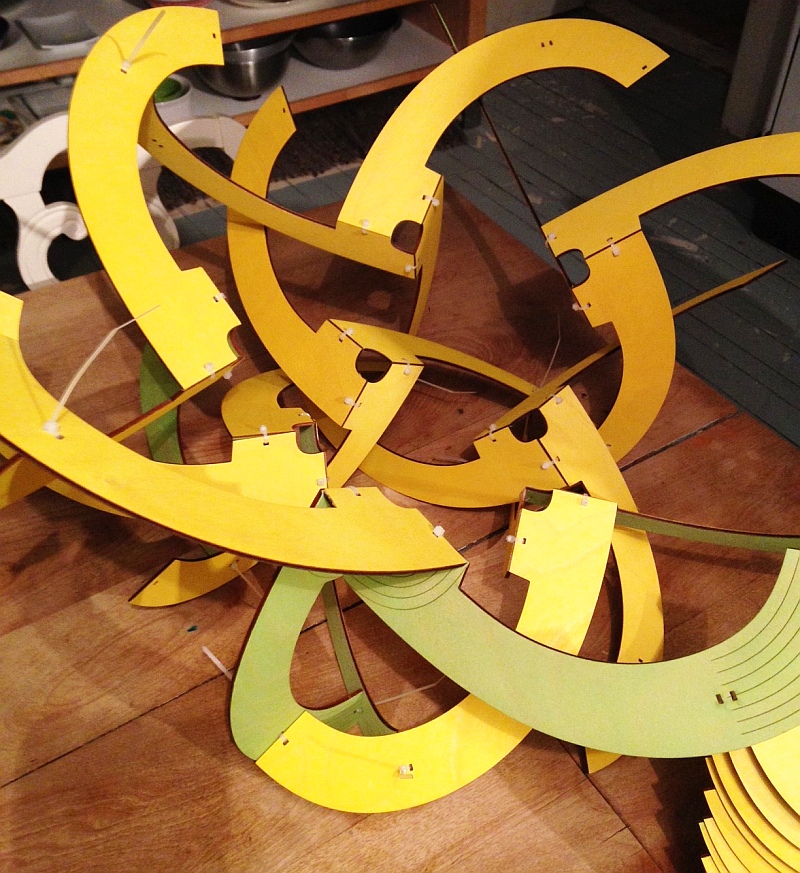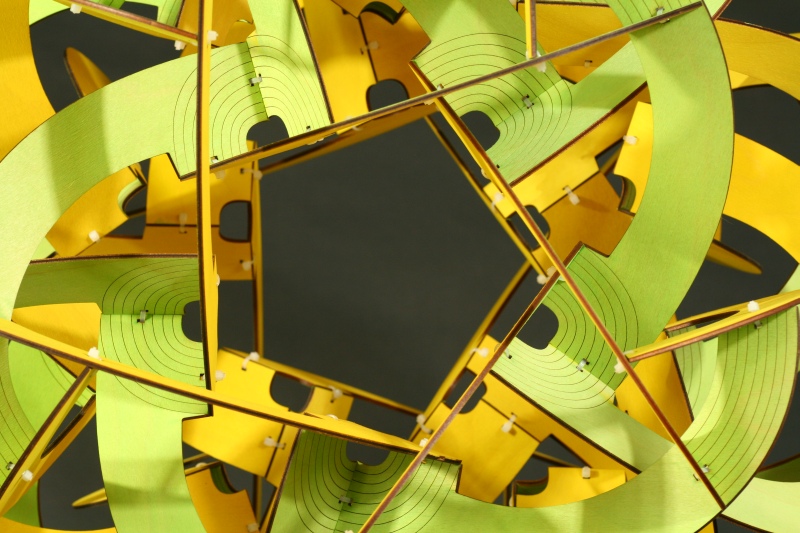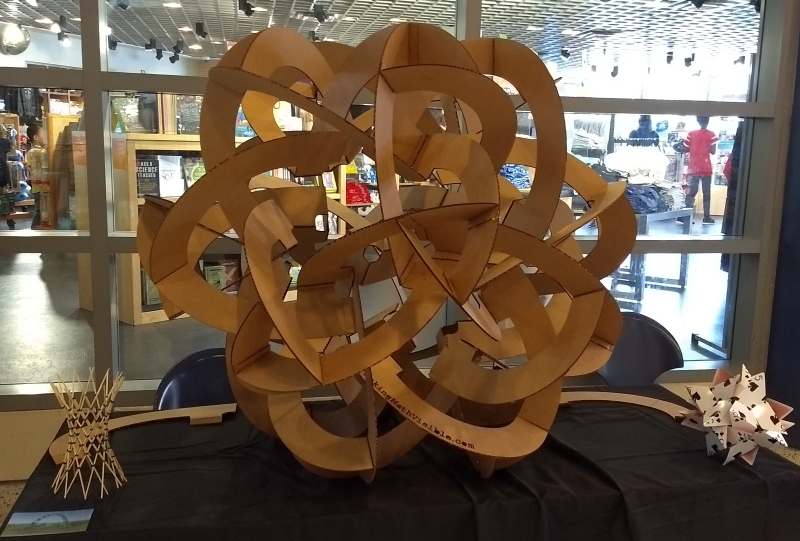6. Check each module to ensure the parts are
properly joined and the ties are tight. You can snip off
the tails with the wire cutter as a mark of which modules you
have checked.
7. For the assembly, pick a table in a central location
that everyone can see. You can tell the class that the
other ends of the parts also meet in groups of three to form
triangles with 3-fold rotational symmetry. (This triangle
is illustrated in the image above.) Students will now be
connecting the modules using the un-beveled end of the part and
the pair of holes near that end. For this connection, the
un-beveled end meets the
front (etched, green) side of
the part.
8. At this stage, the process becomes something of a
puzzle. Groups should take turns bringing their modules to
a central location and keep adding modules to a single growing
structure. One student can hold a module in position where it is
to be attached while other students connect the cable
ties. Encourage each group to have a turn then make room
for others. Allow them to answer each other's questions
about where to connect everything. Students will see the
patterns and figure out how to extend them to complete the
sculpture. Any group not working on the growing
construction at the center of the room can take three more parts
and three more ties and make another module, continuing until
nineteen or twenty modules are complete.
9. A key observation you might want to elicit or point out is
that the cube corners form an inner layer and the new triangles
form an outer layer. Each cube corner lies directly inside
of a new triangle.
10. Students will also be surprised to observe the formation of
regular pentagon tunnels that pass entirely through the
sculpture, like the one shown above. Ask them do determine
how many such tunnels there are.
11. Getting the final module in position requires some gentle
maneuvering. It is best to get the final few modules into
position before connecting any of them with cable ties, so there
is some flexibility to maneuver. Alternatively, the final
module can be assembled in place from three separate
pieces.
12. When complete, check all the connections are correct,
all the cable ties are tight, and snip off the ends of the ties.
13. While working, you can ask students who aren't engaged in
the construction to figure out how many cable ties are needed
all together. From the fact that there are 60 pieces and
each touches four others they should determine there are 120
cable ties. That's 60·4 = 240 connection locations, but
divided by two because each tie joins two connection locations.


